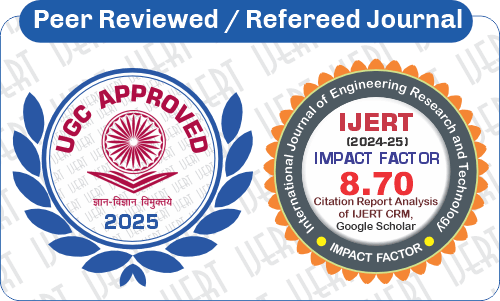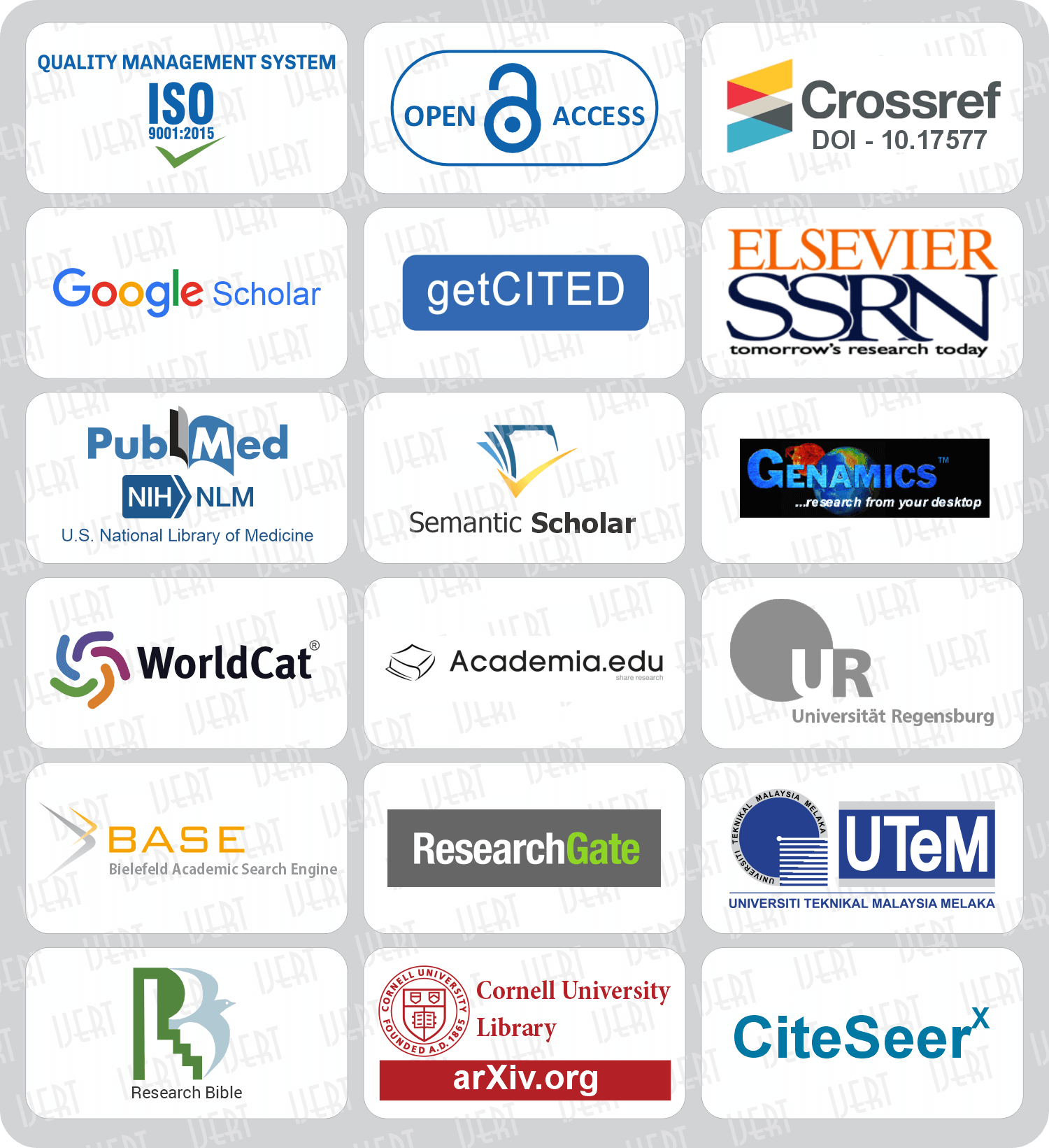 DOI : 10.17577/IJERTCONV5IS05028
DOI : 10.17577/IJERTCONV5IS05028
- Open Access

- Total Downloads : 21
- Authors : Divya Gupta, Sanjay Jain
- Paper ID : IJERTCONV5IS05028
- Volume & Issue : ESDST – 2017 (Volume 5 – Issue 05)
- Published (First Online): 24-04-2018
- ISSN (Online) : 2278-0181
- Publisher Name : IJERT
- License:
 This work is licensed under a Creative Commons Attribution 4.0 International License
This work is licensed under a Creative Commons Attribution 4.0 International License
Comprehensive Overview of Research in finding Transfer Capabilities with FACTS devices in India
Divya Gupta
Electrical Engineering Department
Baba Banda Singh Bahadur Engineering College Fatehgarh Sahib, Punjab, India
Sanjay Jain
Electrical and Instrumentation Engineering Department Thapar University
Patiala, Punjab, India
AbstractThe transmission facilities are the backbone of power system. To keep it delivering with utmost reliability it is very necessary to improve it regularly according to the rising needs. For this either the existing system has to be changed completely again and again or some new devices be added to the existing system so that it keeps on working incessantly and continuously though it will require some extra cost but if it is more advantageous then the decision taken is right. For this, the
management, fourth section explains these devices located in India. Fifth section describes how transfer capabilities be improved using FACTS devices. Finally Conclusion and then References are listed.
-
TRANSFER CAPABILITY ATC is described as
devices which can be used are FACTS (Flexible AC Transmission Systems) devices. This paper lists the comprehensive overview of
ATC TTC TRM ETC CBM
(1)
research done in various years of these devices and explain how they can improve transfer capabilities along with some practical examples and applications of existing devices in India.
KeywordsTransfer Capability, FACTS Devices, Congestion Mansgement, Deregulation
-
INTRODUCTION
The answer to the question of reliably and economically transferring power from one point to other is Available Transfer Capability (ATC) [1-3]. It gives the amount of power to be transmitted based on above mentioned grounds. The modern day requirement is to make the access of power open to all. This is fulfilled by Independent System Operator (ISO). It takes the responsibility of making available all the generation data to all the private players so that they can decide their bid based on the data. This system is known as Deregulation. It has changed the structure of power systems to horizontal i.e. VIU (Vertical Integrated Utility) which was acting as a monopoly first is now reduced to horizontal structure containing GENCOs (Generation Companies), DISCOs (Distribution Companies) and TRANSCos (Transmission Companies). ATC is generally linked with transmission facilities. This structure introduces competition among the market players and results in lesser prices which ultimately is advantageous for the consumers. Quality of power received by the consumers is also enhanced. Also they will have more choices now. FERC (Federal Energy Regulatory Commission) had introduced this concept in 1996. Other components linked with ATC are TTC (Total Transfer Capability), CBM (Capacity Benefit Margin) and ETC (Existing Transmission Commitments).
Numerous authors have published regarding the concept. This paper aims at giving insight into the information available about the work done in this area in the past. Section II deals with Transfer capability issues, next section details congestion
The calculations involved in ATC should take into consideration the points from where the power is extracted, injected and transferred. The power flow conditions which vary with time should be considered in ATC calculations alongwith parallel power flows path in the network of transmission [4-8]. These calculations should give commercially acceptable outputs which must be accurate and indicate the transfer available for the market. Figure 1 shows the concept of ATC pictorially.
TRM
CBM
ATC
TTC
Fig. 1 Concept of ATC
Total Transfer Capability may be defined as per NERC (North America Electric Reliability Council) [9-12] May 1995 notification as the power transferred reliably without violating any limit (such as dynamic stability, thermal and voltage limit) between interconnected network. It is like a vector and hence depends upon direction. If, for example, a simple power system, which is an interconnected one is considered, taking into account three areas viz., receiving, sending and some other area which can be an isolated system etc., then we have to find the value of ATC through the designed path to receiving end from the sending area.
-
-
CONGESTION MANAGEMENT
Transfer capabilities of power system are often affected by congestion management. It is just like traffic congestion. As we have to devise different methods for easing traffic so that vehicles can go seamlessly. Congestion management is dealt effectively using different Flexible AC Transmission Systems devices (FACTS). The working of these devices depends upon the following equation:
Where Vq() is the magnitude of the injected compensating voltage (0 Vq() Vqmax) and is the chosen control parameter.
-
STATCOM (Static synchronous compensator)
If the SVS is used strictly for reactive shunt compensation, like a conventional static var compensator, the dc energy source can be replaced by a relatively small dc capacitor. It exhibits operating and performance characteristics similar to
P V1V2 sin(
)
(2)
those of an ideal rotating synchronous compensator, thats
X
1 2
12
Where P is the power transferred between buses 1 and 2, V1 and V2 are the voltages at these buses respectively. X12 is the reactance between them and and are the angles respectively.
The only drawback is the cost of these devices which is quite appreciable, but viewing their advantages these can be advised. Many devices come under this category [13-17] viz., UPFC (Unified Power Flow Controller), Series Capacitor, SVC (Static VAR Compensator), STATCOM (Static Compensator) and TCSC (Thyristor Controlled Series Compensator).
Figure 2 gives the comparison of costs of these devices
Fig. 2 Comparison of costs of different FACTS Devices
-
UPFC (Unified power flow controller)
It can be considered as a generalized SSSC [18-20] (Static Synchronous Series Compensator) operated without the constraints of the quadrature relationship stipulated for the injected voltage with respect to the line current equations mentioned below in equations (3) and (4):
why it is called Static Synchronous Compensator. (The term advanced static var compensator or ASVC can also be used).
-
TCSC (Thyristor-controlled series capacitor)
The two basic schemes of TCSC are first using thyristor switched capacitors and a fixed capacitor in parallel with a thyristor-controlled reactor. In the thyristor-switched capacitor, the degree of series compensation is controlled by increasing or decreasing the number of capacitor banks in series. In the fixed capacitors, thyristor-controlled reactor scheme, the degree of series compensation in the capacitive operating region is increased (or decreased) by increasing (or decreasing) the thyristor conduction period, and thereby the current in the TCR. Minimum series compensation is reached when the TCR is off. The TCR may be designed to have the capability to limit the voltage across the capacitor during faults and other system contingencies of similar effect.
Many authors have penned down their researches [21] based on these devices. This is explained through Figure 3 and 4 based on the years of research. Table 1 lists the properties of different devices.
Properties of FACTS Devices
LSCC
C
TS
DS
DO
VC
CC
TDV
ARPF
SSSC
SVC
TCBR
STATCOM
UPFC
IPFC
IPC
TCPST
TCSC
TSC
TCR
Table 1 Comparison of Properties of FACTS Devices
VC jkXI
Where VC is the injected compensating voltage phasor, I is the line current phasor, X is the series reactive line impedance, k is the degree of series compensation.
V jV ( ) I
q q I
(4)
Fig. 3 Percentage of research done in different FACTS devices (19922000)
Fig. 4 Percentage of research done in FACTS devices (2001-2016)
-
-
LOCATION OF FACTS DEVICES IN INDIA
Many of the FACTS devices have been installed in India. Some of them were installed in 2004 of 400 KV. Others were installed in Lucknow and has been in service since 2007. In 2005 also FACTS devices were installed in Gooty, Anantapur, Andhra Pradesh and in the same year Cuddapah, Rayalseemah, Andhra Pradesh also introduced one. In Sami, Patan, Gujarat and Meerut it got commissioned in 2010. Fixed Series Compensation devices are installed in Lucknow, Bareilly and Unnao. These all devices are commissioned by Power Grid Corporation of India, Limited (PGCIL). The fixed series compensation at Lucknow and Unnao substations are associated with enhancement of transmission capacity in the east-west corridor of the northern region. The devices are located at 400KV Gorakhpur-Lucknow lines at Lucknow Substations, at 400KV Bareilly-Mandolla lines at Bareilly Substations and at 400KV Unnao-Bareilly lines at Unnao Substations. The system used is Fixed Series Capacitors (FSCs). The capacitor ratings are 2 X 189 MVAr FSCs for Lucknow station, 2 X 187 MVAr FSCs for Bareilly station and
2 X 311 MVAr FSCs for Unnao station. The degree of compensation is 30%, 30% and 45% respectively. PGCIL is an Indian Government entity, and is the only agency responsible for transmission of power across the country. In India, where efficiency of power is now 52% approx., the enhancement of transmission capacity will play a vital role in achieving the target. The project focuses on the enhancement of the transmission capacity of northern grid.
Thyristor Controlled Series Capacitor, longest in world is situated in India, installed by PGCIL. It has constructed 475 Km long overhead line from Purnea in the state of Bihar via Muzafarpur to Gorakhpur in state of Uttar Pradesh. This
project transmits surplus energy from eastern India to the areas around Delhi where the existing generation capacity can no longer meet demand. For the systems in Purnea and Gorakhpur, two thyristor-controlled series compensation systems and two Fixed compensation systems are installed. Notably, series compensation improves the transmission capacity of the overhead line and ensure stability in the grid. The Light-Triggered Thyristors used are notable for their very high current carrying capacity and blocking voltage. Direct light triggered thyristor make it possible to reduce the number of electronic components in the converter valves by about 80%. A further advantage of this modern thyristor design is that all the firing and monitoring electronics are at earth potential, the equipment is consequently accessible during operation. The purpose of this device is to improve the transmission performance and the reliability of the 400 KV overhead line between Purnea in eastern India and Gorakhpur in the north of the country.
PGCIL installed Purnea FSC, Gorakhpur FSC and Purnea TCSC, Gorakhpur TCSC in New Delhi, India. The capacitor ratings are 24.2 / 743MVAr, 3200A nominal current for Purnea FSC and 23.32 / 716MVAr, 3200A nominal current for Gorakhpur FSC, 3.03 / 3.64 / 112 MVAr, 3200A nominal current for Purnea TCSC and 2.92 / 3.510 / 108MVAr, 3200A for Gorakhpur TCSC. The degree of compensation is 40%, 40%, 5-15% and 5-15% respectively. The thyristor valve data is 125mm light triggered thyristor.
-
TRANSFER CAPABILITIES USING FACTS DEVICES The introduction of Flexible AC Transmission devices for
calculation of Transfer Capabilities enhances the transmission capability and reduces congestion. Various combination of devices can be utilized for this purpose e.g. series compensation, shunt compensation or combination of both. Many methods can be used to calculate this such as ACPTDF, DCPTDF, [22-27] Continuation Power flow etc. many researchers have listed all of these methods as mentioned in the references. Plethora of Intelligent techniques can also be used for the same. The voltage stability improvement can be achieved and losses of power system be reduced by methods like Bacterial Foraging Optimization based location of FACTS devices. Also some applications of Distributed Flexible AC Transmission system can also be performed in power systems. These calculations can be performed on various systems of IEEE like 14 bus etc. using FACTS device with voltage constraints. In deregulated power systems they are far more efficient. Dynamic transfer capability can be enhanced through optimal placement of FACTS controllers. A review of FACTS economic and practical evaluation has revealed their importance. A probabilistic modeling based approach for calculation of total transfer capability using FACTS devices can also be done. Transmission capabilities can be enhanced using TCSC via Artificial Techniques. An application of Hybrid Heuristic approach for ATC enhancement has been observed.
-
CONCLUSION
The transfer capabilities can well be enhanced utilizing FACTS devices. These devices are good at relieving transmission congestion just like chest congestion and traffic congestion (daily problems faced). The eased out congestion results in better flow of power and quicker response. Also reliability index becomes high. Some tradeoffs are there like the cost of these devices as listed in the paper. Depending upon the real time situations, contingencies and problems, right amount of FACTS devices has to be decided. That is whether the advantage of relieving congestion is more or cost is more. If for some added cost there is reduction in cost in terms of easing of congestion then it will seem beneficial otherwise if the changing of existing lines are giving far more less cost then one is tempted to avoid these devices. So a detailed study into the effectiveness of these devices in power system has to be observed deeply. But if once FACTS devices are involved they are sue to give many beneficial advantages.
REFERENCES
-
P. Pentayya, P. Mukopadhyay, S. Banerjee and M. K. Thakur, Contingency Analysis for Eastern Regional Grid of India, 16th National Power Systems Conference, pp. 359-363, 2010.
-
North American Electric Reliability Council (NERC), Available Transfer Capability Definitions and Determination, NERC Report, June 1996.
-
Q. Morante, N. Ranaldo, A. Vaccaro and E. Zimeo, Pervasive Grid for Large-Scale Power Systems Contingency Analysis, IEEE Transactions on Industrial Informatics, vol. 2, no. 3, August 2006.
-
G. Sombuttwilailert, B. Eua-Arporn, A Novel Sensitivity analysis for total transfer capability evaluation. Proceedings of 22nd IEEE International Conference on Power Industry Computer Applications 2001, pp. 342347.
-
Y. Ou and C. Singh, Assessment of available transfer capability and margins, IEEE Transactions on power systems, vol. 17, no. 2, May 2002.
-
G. C. Ejebe, J. Tong, J. G. Waight, J. G .Frame, X. Wang, W. F. Tinney, Available transfer capability calculations. IEEE transactions on Power System, 1998, vol. 13, no. 4, pp. 15211527.
-
M. G. Raoot, P. Pentayya and S. Ganguly, Evaluation of Potential Threats to Grid Security by Contingency Analysis, WRLDC, Mumbai, National Power System Conference (NPSC), Dec. 2008.
-
N. G. Hingorani and L. Gyugyi, Understanding FACTS: Concepts and Technology of Flexible AC Transmission Systems. Wiley-IEEE Press, 1999.
-
Transmission Transfer Capability Task Force, North American Reliability Council (NERC) Available Transfer Capability Definitions and Determination. Princeton, New Jersey, 1996.
-
A. Oonsivilai and K. A. Greyson, Power System Contingency Analysis Using Multiagent Systems, World Academy of Science, Engineering and Technology, 2009.
-
A.Y. Dewi, S. P. Hadi and Soedjatmiko, Contingency Analysis of Power System Electrical Operation, Proceedings of the International Conference on Electrical Engineering and Informatics Institute, Teknologi Bandung, Indonesia, June 17-19, 2007.
-
M. Basu, Optimal power flow with FACTS devices using differential evolution. International Journal of Electrical Power Energy System 2008, vol. 30, no. 2, pp. 150156.
-
A. K. Sharma, Optimal number and location of TCSC and loadability enhancement in deregulated electricity markets using MINLP. International Journal of Emerging Electrical Power Systems 2006, vol. 5, no. 1, pp.115.
-
D. Divan, W. Brumsickle, R. Schneider, B. Kranz, R. Gascoigne, D. Bradshaw, M. Ingram, I. Grant, A distributed static series compensator system for realizing active power flow control on existing power lines.
IEEE transactions on Power Delivery 2007, vol. 22, no. 1, pp. 642649.
-
H. D. Chiang, A. J. Fluek, K S. Shah, N. Balu, CPFLOW: a practical tool for tracing power system steady state stationery behaviour due to load and generation variations. IEEE transactions on Power System, 1995, vol. 10, no. 2, pp. 623634.
-
A. J. Wood and B. F. Woolenberg, Power Generation Operation and Control, USA, Wiley & sons, 2012.
-
B.V. Manikandan, P. Venkatesh, S. Charles Raja and A. Srinivasan,
Electrical Power Systems, PHI Learning Private Limited, Delhi, 2012.
-
G. C. Ejebe, J. Tong, J. G. Waight, J. G. Flame, X. Wang and W.F. Tinney, Available Transfer Capability Calculations, IEEE Transactions on Power Systems, vol. 13, no. 4, November 1998.
-
Federal Energy Regulatory Commission (FERC), Open Access Same- Time Information System and Standards of Conduct. Order No. 889, Final Rule, 1996.
-
A. Kazemi, B. Badrzadeh, Modeling and simulation of SVC and TCSC to study their limits on maximum loadability point. International Journal of Electrical Power Energy System, 2004, vol. 26, no. 5, pp. 381388.
-
R. D. Christie, B. F. Wollenberg and I. Wangstien, Transmission management in the Deregulated environment. Proceedings of IEEE
-
W. Li, M. Shaaban, Z. Yan, Y. Ni, S. Member, and F. F. Wu, Available Transfer Capability Calculation with Static Security Constraints, Power Eng. Soc. Gen. Meet. IEEE, vol. 1, pp. 306310, 2003.
-
N. Sambasivarao, J. Amarnath, and V. Purnachandrarao, Enhancement Of Available Transfer Capability In Deregulated Powersystem Using Series Facts Device (TCSC), Int. J. Eng. Res. Technol., vol. 2, no. 11, pp. 192199, 2013.
-
L. Min and A. Abur, Total transfer capability computation for multi- area power systems, IEEE Trans. Power Syst., vol. 21, no. 3, pp. 1141 1147, 2006.
-
E. de M. Magalhães, A. Bonini Neto, and D. A. Alves, A Parameterization Technique for the Continuation Power Flow Developed from the Analysis of Power Flow Curves, Math. Probl. Eng., vol. 2012, pp. 124, 2012.
-
B. V. Manikandan, S. C. Raja, P. Venkatesh, and P. S. Kannan, Available Transfer Capability Determination in the Restructured Electricity Market, Electr. Power Components Syst., vol. 36, no. 9, pp. 941959, 2008.
-
V. H. Quintana, C. C. A., and A. C. Z. De Souza, New Techniques Computations to Speed Using Up Voltage Collapse Tangent Vectors, IEEE Trans. Power Syst., pp. 13801387, 1997.




